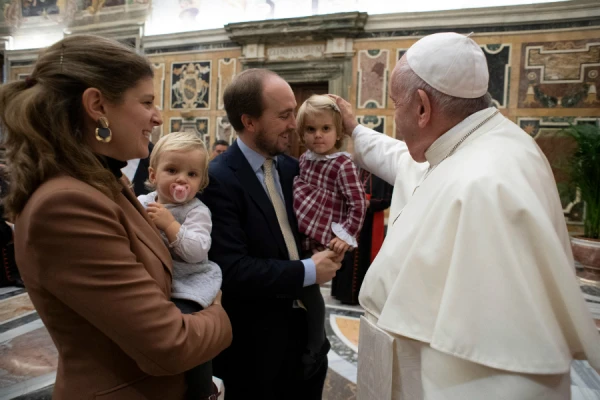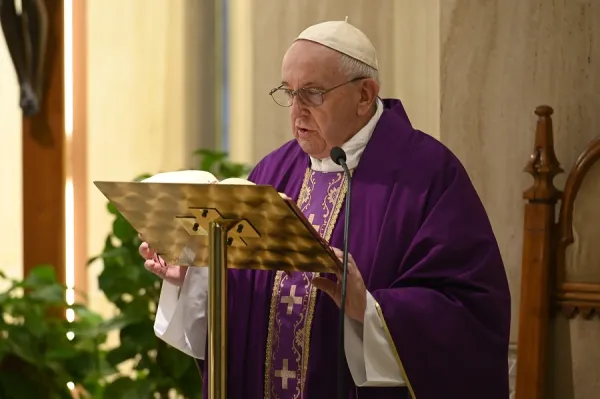
Vatican City, Nov 16, 2019 / 07:00 am (CNA).- Pope Francis said Saturday that more women are needed in positions of leadership in the Vatican.
“We must move forward to include women in advisory positions, also in government, without fear,” Pope Francis said Nov. 16 in a meeting with the Vatican Dicastery for Laity, Family and Life.
“Yes, of course, also as heads of dicasteries,” the pope said, adding that he had considered two women for the appointment last week of the new prefect of the Secretariat for the Economy for which Francis ultimately selected Spanish Jesuit Fr. Juan Antonio Guerrero Alves.
Pope Francis said that it is important to always remember: “The place of women in the Church is not just as functionaries.”
“Women’s advice is very important,” he said. “The role of women in ecclesial organization, in the Church, goes further and we must work on this as well because a woman is the image of ‘Mother Church.’”
Pope Francis commended the Vatican Dicastery for Laity, Family and Life for having two women under-secretaries in their leadership. Both women are married with children.
The pope told the Vatican dicastery — created in 2016 to promote the pastoral care of the family and the mission of the lay faithful — not to “clericize the laity.”
He reflected: “So many times it happened in the other diocese [Buenos Aires], a parish priest came and told me: ‘I have a wonderful lay person, he knows how to do everything, everything. Do we make him a deacon?’”
Francis lamented that too often he sees permanent deacons become “first-class altar boys or second-class priests” rather than “custodians of service.”
“This, on clericalization, is an important point,” he said.
With the papal audience, the Dicastery for Laity, Family and Life headed by Cardinal Kevin Farrell concluded its first Plenary Assembly Nov. 13-16 on the identity and mission of the laity in the world.
The pope told the dicastery staff to “feel with the heart of the Church,” and to move from thinking from a local perspective to a universal perspective.
“The dicastery of which you are a part should, above all else, help the many disciples of Christ to live in daily life in conformity with the baptismal grace they have received,” he said.
“There are so many lay faithful in the world who, living their faith with humility and sincerity, become great lights for those who live next to them,” Pope Francis said.
If you value the news and views Catholic World Report provides, please consider donating to support our efforts. Your contribution will help us continue to make CWR available to all readers worldwide for free, without a subscription. Thank you for your generosity!
Click here for more information on donating to CWR. Click here to sign up for our newsletter.




Clericalist is a problem? How about Roman centralization?
Emote. Emote. Emote. Rinse. Repeat.
” Pope Francis said Saturday that more women are needed in positions of leadership in the Vatican.”
No, we’re not.
During the festivities at Cana, through her timely suggestion, Mary played a vital role in raising the overall tone of the celebrations.
More women in “positions of leadership” isnt really what the Church needs right now. We need more people in positions of service to others.
Most of the demands we hear from women come from those who confuse power and Christian service. The Church isn’t a corporate ladder. But to be fair, men can get that wrong also.
In my opinion, the heads of the dicasteries or departments within the Vatican, at last for the most part except for a few such as the Press Office have to be headed by bishops, just as in a diocese, lay faithful cannot be Vicars of the Bishop because the Church is hierarchical and its governance derives from the Sacrament of Holy Orders. The heads of these departments fulfill a role which makes them similar to Auxiliary Bishops due to the fact that they exercise jurisdiction in the name of the pope.This is part of the divine origin of the Church and cannot be changed. This cannot be done by lay people, be they women or not. Besides, do women have some special revelation?